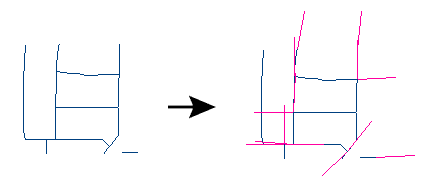This parameter specifies the number of segments
that should be considered when computing the orientation angle for the
extension feature. By default, this is set to 1, which means the orientation of the extension feature matches the orientation of just one segment in the original feature. It can be set to any number of segments, in which case the orientation will be set to the average orientation of those segments. If the number of segments is larger than the number of segments available on the feature, then the entire feature orientation is averaged and used.
You can enter a number, or the value can be taken from an existing feature attribute (select the attribute name from the pull-down list).

 beside the applicable parameter. For more information, see
beside the applicable parameter. For more information, see